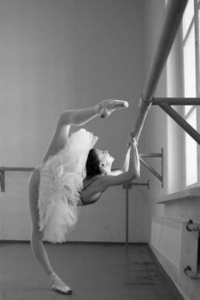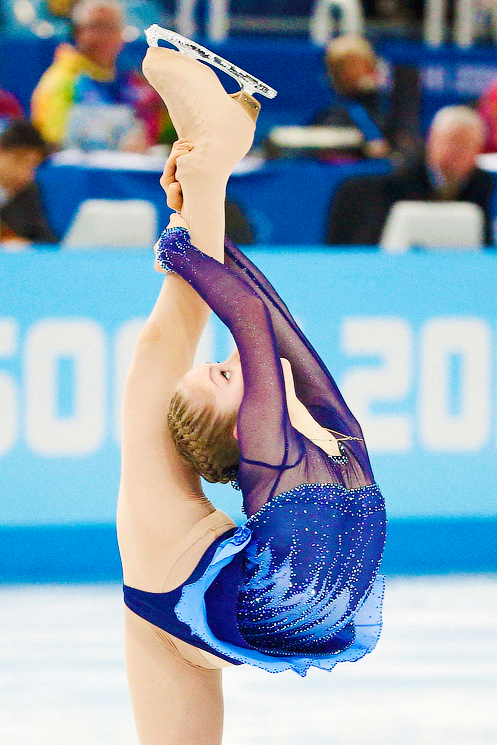5 Important Things You Might Not Know About Stretching
I've posted an article about stretching when I first launched the blog, but I wanted to update that post a bit and make it even better for you all. Plus, there are way more of you guys reading now, then there was back then😆
This updated post first came to mind because I realized I really need to do a post on foam-rolling, because within the past week, I've seen two fitness "experts" put out foam-rolling tutorials and informational guides that are...not quite accurate🙈. I don't mean to tear anyone down at all, because I know those were crafted with good intentions; but science is science, and when it comes to manipulation of the human body through exercise and fitness, incorrect information can actually do serious harm. And I'm really not down with that.
Back to stretching! You hear it's good for you, that you should do it to take care of your joints, so you don't get stiff, etc etc etc. This seemingly simplistic thing is actually far more complex than a simple sit and reach, and it doesn't help matters that every other trainer, instructor, and physical therapist is saying something different.
At the end of the day, every person has different needs, restrictions, and abilities, so this post is not to tell all the best stretch poses-- it's more about giving you the information you need to be able to strive for your goals more efficiently and safely.
Here are 5 important things you might not know about stretching:
1. Flexibility and Mobility are NOT the same thing.
As a trainer, a very common goal I hear during an initial client assessment is that they want to get more flexible or improve their flexibility. About 90% of the time, what they means is they want more mobility. They'll try to show me by bending over to do a toe touch and say, "I'm so inflexible, I can't touch my toes!" Well yes, your hamstrings may indeed be tight too. But for a large majority of the population, it's hip mobility they lack.
So, what exactly is the difference between the two?
Mobility = the ability to move through a joint.
Flexibility = a connective tissue (in this case, muscle)'s ability to temporarily elongate.
Best analogy I can make is a Chinese fingertrap- the actual length of the material doesn't change, but you can stretch (lengthen) and shorten (contract) it. Another important thing to note, is that if you're hoping to lengthen your muscles to get a "long and lean," look, stretching ten ways to Sunday isn't going to help you. It is physiologically impossible to "lengthen" your muscles. Both ends of a muscle affix to bone at a joint. Bone, as in, unmovable/unlengthen-able bone.
Pretty much everyone is born with near-perfect mobility as a baby-- think about it: they can put both of their feet behind their ears no problem, and squat perfectly to pick up their toys. But life essentially messes us up. We sit in chairs for 12-hour work days with our shoulders rounded (goodbye hip, shoulder, and t-spine mobility- sitting really is the enemy), and we wear high heels (goodbye ankle mobility).
Things like your hips, shoulders, thoracic spine (t-spine/"upper back"), and ankles are built to move. But when those joints lose mobility, our other joints meant for stability like your c-spine (neck area, you know, to hold your head up), lumbar spine (lower back), and knees decide to be superheroes and pitch in with helping you move. But that's not a good thing. How often do you see people reaching for a pillow for lumbar support (time to strengthen your core/work on your t-spine mobility!), or complain about how they have "bad knees?" Chances are, the root of the issue is not your lower back or knees. It's that your hips and t-spine decided to stop helping you move.
So in that case, stretching or more flexibility won't help you, but working on your mobility will.
2. Stretching until it hurts does not mean you're a tough warrior. It means you're unnecessarily throwing yourself into battle.
It's you likely ignoring your body's yellow flag or pushing for an injury. Stretching something that always feels "tight" or going super deep into a stretch because you don't "feel it" yet is usually not wise.
Your body is insanely smart. As in, it knows things before your brain can even figure out what's going on. Everyone has muscular imbalances- that's pretty normal. But when they get out of control, that's when injury happens.
If a muscle, let's say in this case your hamstring, feels extra tight and doesn't go away for awhile but it just feels so gooood to stretch so you just keep on stretching and stretching. Because it feels better and "loosened up" after stretching, right? Well that hamstring of yours might be tightening up on purpose to protect itself or some other issue that might be going on. Your body might be trying to put a shield up but you keep barging through it by overstretching.
And this last part of this bullet point is for all my skaters, dancers, and gymnasts out there: we are the queens of saying "ahh my hamstring feels so tight" while your foot is by your head and you could untie your shoelaces with your teeth. At that point, stretching is maybe not entirely necessary to help you "loosen up" (oh, the blasphemy!!!!!!)- you may benefit more from myofascial work and foam rolling.
3. Static stretches are best saved for last.
Before you decide to go into a nice, long stretching session before you get to your squats and box jumps, hold up. And reverse, reverse.
To prepare for a workout, the goal of warming up is to get your body temperature and heart rate up, to mobilize any joints pertinent, and to activate the areas you are planning to utilize for that workout. Static stretching on the other hand, signals to your body that it's time to cool down and relax. Deep breathing and static stretching activate your parasympathetic nervous system that is responsible for starting the recovery process- which is great! Just, for post-workout.
There has also been a significant amount of research on the decrease of athletic performance after stretching. To put things in layman's terms and boil it down: a muscle does two primary things: it contracts, and it relaxes. A stretch is meant to relax the muscle, so the fibers can elongate. When you do any movement (walk, pick up a dumbell, pick up your kid, open a door), muscles contract so that you can exert strength. Don't you think that stretching out a spring and holding it for 20 seconds will remove some of its elasticity and ability to tightly bounce back? We've all had the sad experience of ruining a Slinky as a kid because we pulled it a little too far.
4. Not everyone needs to be gumby flexible.
Those pictures above are not normal. At all. Let me be clear- these ladies, as awe-inspiring as they are, are demonstrating contortions of the body that is for a sport-specific purpose because their careers rely on movement like this. Your everyday woman (or man) should not be forcing themselves into a pretzel- unless your goal in life is to work for Cirque du Soleil.
I have been extremely mobile & flexible my whole life- this came in prime use for my skating career. I could do extreme positions like that photo on the top left without breaking a sweat and my nickname was Gumby. It was lauded as an extreme talent and something to be grateful for. Well. Being so mobile but not owning the control over all of it, while doing an extreme sport is a main contributing factor in the number of injuries I've had. And that is more than most football players I know. I really mean it when I say everything hurts when it rains!
Not everyones bodies are built the same way, nor our bones and joints in particular. Someone like me with a hip impingment should not be pushing my hip past certain ranges of movement- doing so essentially smacks bone into bone (hello arthritis).
I love yoga. Love it so much, as it has immense mental benefits as well as physical; HOWEVER- one of the goals and popular marketing points for yoga is to "improve flexibility." But for someone who isn't necessarily built to be quite flexible, shoving themselves into a bind and holding for a good 20 seconds, is asking for a potential world of hurt.
There has been a sharp, spiked increase in hip and spinal injuries that coincide with the widespread practice of yoga- or shall I say, the improper instruction and regulation of it. The New York Times and Huffington Post both featured really great articles detailing this trend further.
5. Bouncing= No No No No No No No
When you jump on a trampoline, you know how every time you land, you can usually hear the springs stretch and you make a dent in the trampoline only to spring back up?
Well, your muscle is like the black material of the trampoline and the springs represent your connective tissue (tendons and ligaments) that help secure everything where it needs to be. By bouncing while stretching, you're effectively increasing risk of a connective tissue tear or overstretch- I don't think anyone wants that. I mean the springs of your trampoline (tendons and ligaments) are pretty tough, but why on earth do you really want to test them for no reason?
Also, muscles have a natural protective reflex. Ever feel that when you stretch and go right for it, you naturally tense up sharply but then after a few seconds of breathing and "sinking into" the stretch, you can go a little further? That initial tension is your body's way of making sure you're not overstretching in a counterproductive way. This is a good thing. Don't push recklessly past it, and especially don't bounce your way past it- you're not doing yourself any benefit that way.






